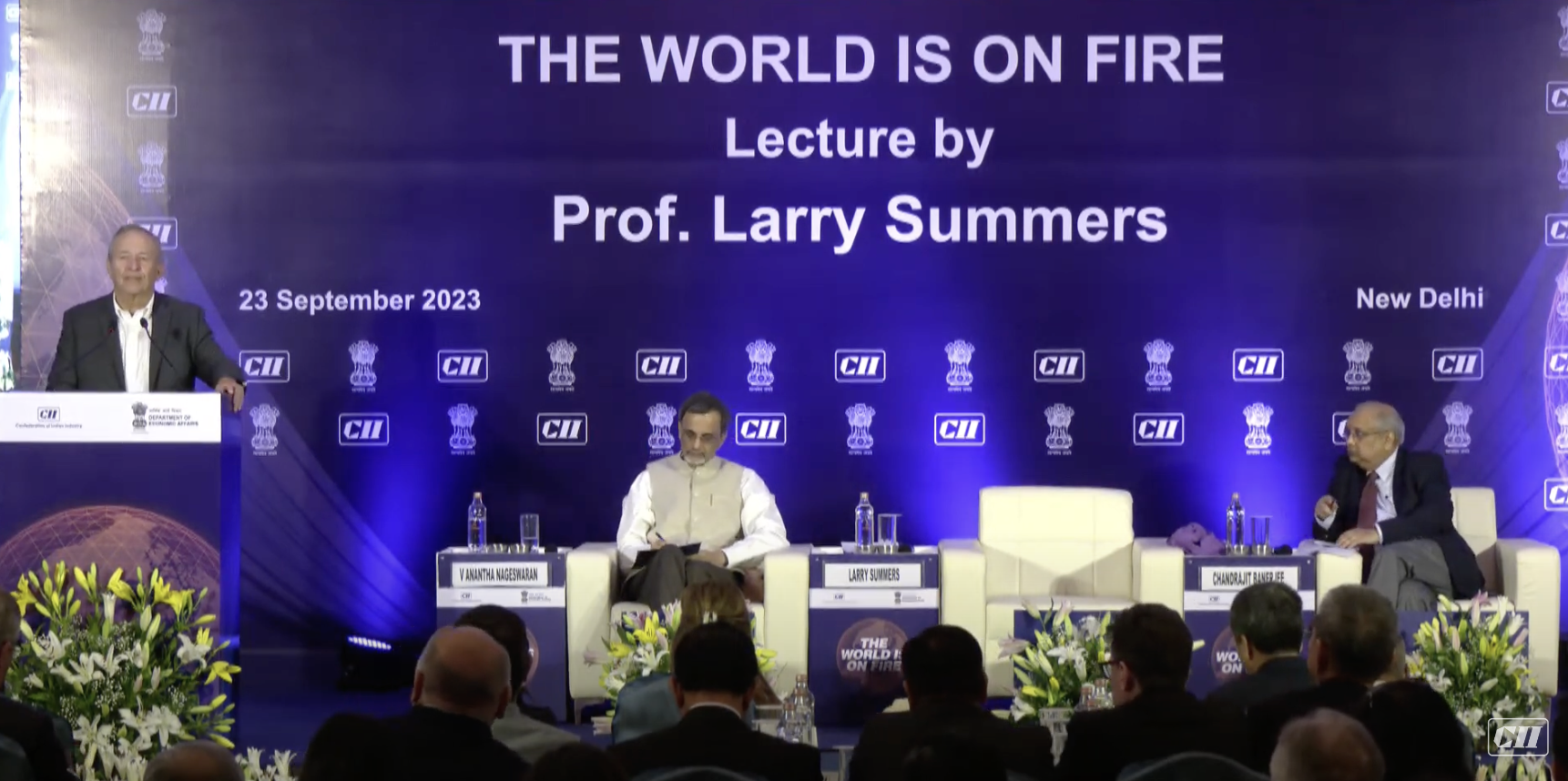Recommended
As UN Secretary General António Guterres put it at the Climate Ambition Summit in September, "humanity has opened the gates to hell". The Annual Meetings of the World Bank and the IMF in mid-October in Marrakech will be a big opportunity to avoid the worst outcomes from climate change. The governors of the World Bank will decide about the future of the World Bank’s business model—with strong implications for other multilateral development banks (MDBs) and the entire international financial architecture.
One burning question is if the World Bank—together with the regional development banks—will use their potential in decarbonising the world economy. The first step in barricading the gates of hell has to be decarbonising the energy sector. It contributes the most to global greenhouse gas emissions by far. Besides, clean energy is to a large extent constitutive for decarbonising other sectors, such as transport and agriculture.
Looking into the abyss the G20 leaders agreed at their 2023 Summit in India to pursue tripling renewable energy capacity globally by 2030 and accepted the need to phase-down unabated coal power. The group said $4 trillion a year would be needed by 2030 to finance renewable energy, making it clear that the bulk of those investments will have to come from the private sector.
According to estimates by the International Energy Agency and the World Bank, 950 gigawatts of solar photovoltaic and 580 gigawatts of wind energy need to be installed in developing countries by 2025.
To reach those objectives, large amounts of private funding will have to be unlocked to complement the limited public financing available. However, there is little evidence that private finance flows into developing countries have been growing. Looking at the commitment of rich countries to provide $100 billion of climate financing yearly, the part mobilised from private sources is stagnating at around $14 billion. This is all the more surprising as the unsubsidised cost of solar and wind technologies in developing countries has come down drastically, thus creating opportunities for profitable investments. The key question is therefore how to unlock private sector investments for renewable energy at scale.
The G20 Independent Expert Group (IEG) presented in its report ”The Triple Agenda“ a number of important recommendations on how to change the MDBs’ operating models and how to scale up financing, in particular from private sources. The report argues that the international development finance system should aim to unlock an additional $500 billion of private capital, especially for climate action. It is important to understand that there are different ways of doing so (as well as different terminologies for those ways). Broadly speaking, private capital can be unlocked by direct or indirect mobilisation. In both cases, the public balance sheets are used in order to reduce risks and capital costs for private investors. Besides, private sector investments can be enabled. In that case, private capital is unlocked by policy reforms at the macro and sector level, or through complementary public investments. The IEG is suggesting that more than the half of the envisaged additional private sector investments ($260 billion from $500 billion) must be unlocked by enabling.
There is no shortage on knowledge and good advise regarding direct and indirect mobilisation (see the report of the IEG, Philippe Le Houerou / Hans-Peter Lankes, Vera Songwe, and Stephanie von Friedeburg, as well as the report of the expert group on private sector set up under the German G7 Presidency). In contrast, the issue of private sector enabling has been somewhat neglected – in theory but even more so in practice. To be clear, it is not a mutually exclusive choice – on the contrary. Public guarantees and blended finance should be used more systematically to bring the costs of capital and risks down; in particular, currency risk is a big impediment for investors.
But this should wherever possible be combined with private capital enabling, such as regulatory reforms. This has often not been the case, which might explain why we have been so unsuccessful in mobilising private capital. Besides, it is also a question of fiscal sustainability. Only a few days ago, the IMF set the alarm bells indicating that relying too much on subsidies and sweeteners for the private sector would not be sustainable. The IMF estimates that focusing on those ”spending- based measures“ to reach net zero goals by midcentury will become increasingly costly, possibly raising public debt by 45−50 percent of GDP for a representative large-emitting country.
It is also problematic that private sector enabling is not measured. This is in contrast to direct and indirect private sector mobilisation, where the OECD and the MDBs are continuously monitoring their efforts. Private sector enabling will only be done if it is measured. Therefore, a methodology is urgently needed.
To get a better grasp of the issue, let us look at what successful countries have been doing in order to transform the energy sector as well as the transport and the agricultural sector. An example: The German automobile industry only started to invest at-scale in e-technology once the new German government, along with the European Commission, set a date for the phasing out of the combustion technology, set stringent emission standards, invested in public loading stations, and provided financial support to citizens and companies. This is a market-creating approach – a term that has been coined in the context of IFC’s 3.0 reform, a reform which started promising but has not been rigorously implemented. Market transformation only works if the public and the private sector are closely cooperating. It is good news that the new World Bank president, Ajay Banga, has set up a Private Sector Lab. It raises, however, the question why this team is essentially composed of private sector experts while the public sector perspective is largely lacking.
How can MDBs contribute? They need to roll out instruments which support countries in improving their regulatory and fiscal policies, thus laying the foundation for private investments, e.g. in renewable energies. Policy-based lending, in particular so-called Development Policy Operations (DPOs), should play an important role. Unfortunately, the World Bank has been very slow. While I was executive director at the Bank I have persistently asked to roll out DPOs for climate-related reforms as well as to set up country platforms for aligning donor contributions behind government plans. As the progress was slow, a group of donors and developing countries set up the Just energy Transition Partnerships (JET-Ps).
The JET-P approach is essentially a market-creating agenda, with policy-based lending and alignment around country platforms. While it is very promising, it is also complex and ambitious. Therefore, it might be best applicable for countries with weak institutional capacities.
Ajay Banga has recently highlighted the problem of the huge fossil fuel and other environmentally harmful subsidies and to need to bring them down. If the social implications are taken into account, this would indeed be a key policy reform with a great potential for private capital enabling. The next step should now follow with a rollout of DPOs and other market-transforming instruments –possibly in a context of country platforms. Helping countries to scale down fossil fuel subsidies in a just way would be a good start. Some shareholders, such as the US, are reluctant when it comes to extending policy based instruments such as DPOs. This is understandable as those instruments are complex and prone to misuse. But we should not throw out the baby with the bathwater. We can learn from past experience and apply best practices: focusing support on countries with high ambitions (no arm-twisting), making sure that prior actions or key performance indicators are ambitious and ensuring parallel support for capacity building, and intensive policy dialogue.
There is no doubt that most governors of the World Bank want the Bank to play a greater role in mobilising the private sector for transforming developing countries’ economies, in particular the energy sector. Marrakech offers the opportunity to walk the talk. Governors might ask the Bank management to present at the Spring Meeting an operational plan how to mainstream the private sector mobilisation across the Bank. This plan should give particular importance to private sector enabling for renewable energy generation. It should outline the changes needed in terms of targets, organisation, incentives, and instruments. Possible synergies within other MDBs should be explored.
Disclaimer
CGD blog posts reflect the views of the authors, drawing on prior research and experience in their areas of expertise. CGD is a nonpartisan, independent organization and does not take institutional positions.






